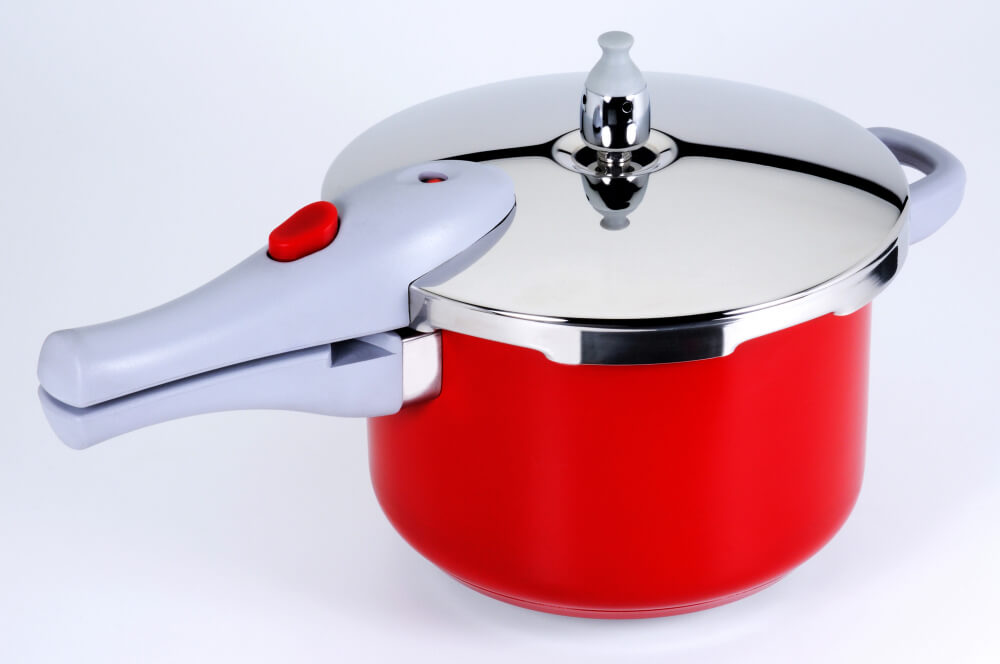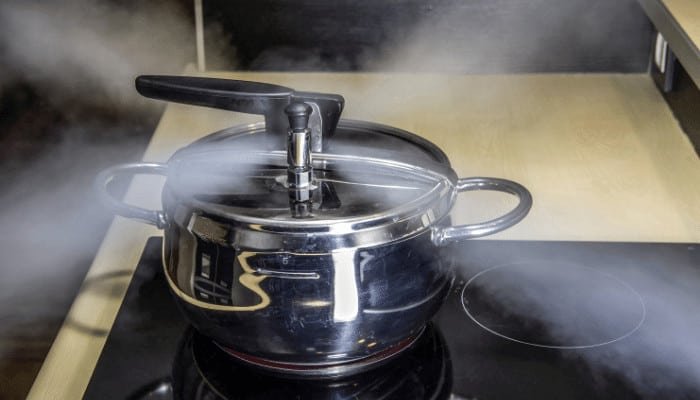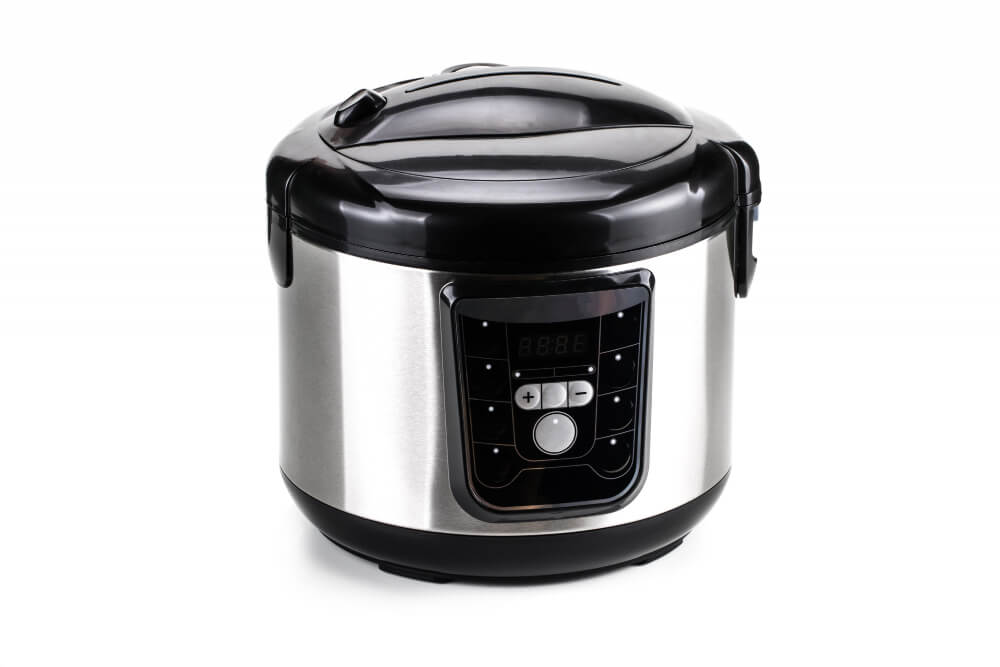Last Updated on August 13, 2023 By Emma W. Thomas
A pressure cooker can explode due to excessive pressure buildup, often caused by blocked steam valves or faulty seals. To fix it, keep the cooker fill up to ⅔ and leave ⅓ empty. After every use, cool the pressure cooker, and inspect and replace damaged parts.
Reasons Why Pressure Cookers Blow Up
Pressure cookers have become a popular cooking appliance due to their ability to reduce cooking time and enhance flavors. However, there have been instances where pressure cookers have exploded, causing serious accidents. While these incidents are rare, understanding the potential reasons behind pressure cooker explosions is essential for ensuring safety in the kitchen. In this listicle, we explore five astonishing reasons why pressure cookers can blow up, emphasizing the importance of following proper usage guidelines and maintaining a vigilant approach.
- Overfilling:
One of the primary reasons pressure cookers may explode is overfilling. These appliances have a specified maximum fill line, beyond which excessive pressure can build up, leading to catastrophic consequences. Failure to heed the fill line guidelines can result in food ingredients blocking the pressure release valve or clogging the steam vent pipe, causing pressure to build up uncontrollably. - Failure to Release Pressure:
Another factor that can contribute to a pressure cooker explosion is neglecting to release pressure properly. When cooking is complete, it is crucial to allow the pressure to dissipate by following the manufacturer’s instructions. Abruptly opening the lid without venting the pressure can instantly release a powerful burst of steam, leading to a dangerous explosion. It is essential to exercise patience and caution during this step. - Aging or Faulty Seals:
Pressure cookers rely on a tight seal to maintain the desired pressure. Over time, seals can wear out, harden, or become damaged, compromising their ability to contain pressure effectively. Aging or faulty seals can result in sudden depressurization, causing the pressure cooker lid to forcefully blow off. Regular inspection and replacement of seals are crucial for preventing accidents due to seal failure. - Mechanical Malfunction:
Pressure cookers are intricate machines with various components that must work cohesively for safe operation. Mechanical malfunctions, such as a faulty pressure release valve or a defective locking mechanism, can lead to excessive pressure accumulation and eventual explosion. It is essential to purchase pressure cookers from reputable brands and regularly check for any signs of mechanical issues. - User Negligence:
User negligence is perhaps the most common reason behind pressure cooker explosions. Failure to read and follow the instruction manual properly can lead to disastrous consequences. Inadequate maintenance, improper cleaning, using excessive heat, or leaving unattended pressure cookers can result in accidents. Being knowledgeable about the appliance’s limitations and adhering to safety guidelines significantly reduces the risk of explosions.
Check The Equipment Before You Start Cooking
The main equipment or parts in a pressure cooker are the lids, the rubber gasket, the pressure valve, and the whistle. Faulty equipment makes your pressure cooker dangerous to use. The scariest accidents happen when your equipment is damaged, defective, and needs immediate replacement.
1. What Happens When The Parts Are Faulty?
When the gasket is cracked, it does not close the lid of the cooker properly. This hampers the cooking and can leave the food undercooked due to a lack of pressure build-up. But most importantly, it can cause the lid to open up accidentally, spraying hot liquid everywhere. If the lid’s locking mechanism is defective, or the pressure release valves are faulty, the steam won’t escape. When excessive pressure of steam builds up inside the cooker, the lid can blow off.
2. Safety Instructions
Here are some safety instructions that you need to follow regarding the equipment.
a) Check whether the gasket or the rubber ring that lines your cooker is not dry or cracked. The rubber or silicone material may get damaged with use. You need to replace it every one or two years to prevent accidents. It will also help your pressure cooker to function normally.
b) Clean the pressure valve frequently and change it periodically. This part is responsible for building pressure and maintaining it to cook the food. A faulty pressure valve does not let the pressure reach the optimum level or allow its safe escape.
c) When you wash the lid and the pot of the pressure cooker, clean the gasket and whistle too. The valve should be properly cleaned so that dried food or froth isn’t stuck inside. Whenever there is debris stuck inside the valve, it can prevent safe pressure buildup and release.
Excessive Pressure Build-up
Any object will burst if there is too much pressure building inside it. Relate the situation to a volcano that erupts due to intense pressure inside the mountain. A pressure cooker can have intense pressure inside it if you overheat it, which causes excessive steam formation inside. Otherwise, the pressure cooker is unable to release the steam safely to ease the pressure inside. As a result, the lid can blow off when the pressure is too high beyond tolerable conditions. Check whether the pressure valve is working or if there is excess foam clogging the mouth.

It is also mandatory that you allow the steam to release before opening the lid naturally. Allow the pressure cooker to cool down and naturally let out all the steam before you try to open it. It prevents accidents and injuries. If you forcibly try to open a cooker when it is still hot, the pressure inside can force open the lid and spray out the contents. Therefore, you need to follow the safe pressure release technique.
1. How Long Should I Wait Before Opening The Lid?
There are mainly three ways of releasing the pressure inside the cooker safely before opening the lid. It depends on what you are cooking and how much content is inside.
2. Slow Natural Release
Here, you need to remove the cooker from the heat and allow it to cool naturally for about 10 to 30 minutes, depending on the amount of content inside. It helps to naturally let the pressure go down until it is safe to open. It is best to use this method when you are cooking starchy items like rice, lentils, soups, stews, etc.
3. Quick Release
You can also wait for a considerably short amount of time using the cooker’s steam release valve to let out the steam fast. Some cookers come with a steam release button or lever to quickly release the pressure and indicate it when done. However, this method is only recommended for fast recipes like boiling vegetables. It also helps to prevent overcooking or over-drying of the vegetables. Do not try this for rice and legumes.
You may also try to combine the slow natural release and a quick release for certain foods and have a better and safer experience.
4. Cold Water Release
The other method, especially if you are in a hurry, is to run cold water over the closed cooker to cool it down fast. Just take the closed cooker to the sink and open the tap from the top. It helps to cool down the excessive heat and release the pressure in a minute or two.
Overstuffing The Cooker
A pressure cooker can burst when it cannot handle too much pressure than its capacity. People often make the mistake of stuffing the cooker with too much food and water.
1. What Happens If You Overstuff A Cooker?
When you fill up a cooker almost to the lid, the steam generated from food and water becomes too high to handle. A pressure cooker can only handle steam pressure to a certain capacity. Too much food and water inside the cooker blocks the release valves, increasing the pressure inside. Starchy foods like beans will swell up and release a lot of foam, which can block the vents. When the steam cannot escape, the intense pressure may cause a blow-up.
2. How Should I Correctly Fill Up A Cooker?
You should put enough water in a cooker but never exceed the limit. Many models come with markings to make you aware of the recommended limit. Never fill up more than 2/3rds of a pressure cooker with food and water. Limit the level to half of the pressure cooker while cooking rice. Never ignore the maximum capacity of a pressure cooker or the recommended limit to avoid unwanted accidents.
Use Proper Quantity Of Liquid
Cooking in a pressure cooker means you have to abide by the cooking instructions and safety guidelines. One of the essential cooking instructions for a pressure cooker is to use an optimum quantity of water. You must know not to exceed the recommended amount of water or put in too little of it. Both of the conditions are dangerous for cooking.
1. What Happens When I Put Too Less Or No Water In The Cooker?
You are only allowed to put less water to boil the food in the cooker if it releases natural juices in a high quantity. Otherwise, too little or no water is dangerous to heat for a long time. When you put the cooker with less water and do not reduce the heat, the water evaporates too soon and burns the food. Often, there isn’t an optimum pressure build-up needed to cook the food.
Moreover, when you overheat the cooker in this condition, the rubber and silicon parts will start melting. Also, the air and steam created inside from the food keep increasing the pressure beyond the capacity. In such a situation, if the valve is stuck and cannot let out the air and steam, it will lead to an explosion. The expanding air pressure builds high energy inside, which forces the lid to open and burst the contents everywhere.
2. What Happens If There Is Too Much Water In The Cooker?
The situation explained above is also true when you put too much water in the cooker. If you fill up more than half or almost the entire cooker, the weight, and pressure are too much to handle. The vent tube will block due to intense pressure. Usually, the plug or release valve helps to release the excess pressure to maintain normal conditions. But if they do not work due to being blocked by excessive force, the lid ruptures and flies off and sprays hot liquid and foam in all directions.
3. How Should I Determine The Optimum Amount Of Water For The Cooker?
The recommended amount of liquid for a pressure cooker says that you should add at least one water cup to build optimum pressure. You should always add one to a maximum of two cups of water along with the food in the cooker. Never exceed the recommended limit of water until and unless your recipe mentions it. Follow the recipe instructions very carefully.
How to avoid pressure cooker explosions?

Pressure cookers are an invaluable tool in any kitchen, allowing for fast and flavorful meals that otherwise would take hours to prepare. But they can also pose a risk if not used correctly, leading to possible explosions. The following list provides safety tips on preventing pressure cooker explosions.
1. Read the Manual
Before using a pressure cooker, one should carefully read and understand the manual. Different pressure cookers have different features and safety mechanisms. Understanding them is vital in ensuring safe usage.
2. Do Regular Maintenance Checks
Regular check-ups of the pressure cooker’s components are crucial for ensuring its safe operation. These include gaskets, valves, handles, and lids.
| Component | Function |
|---|---|
| Gasket | Seal between lid and pot |
| Valve | Release excess pressure |
| Handles | Secure handling of the pot |
| Lid | Secures the cooking process |
If any component is damaged, replace it before using the pressure cooker again.
3. Observe Filling Levels
Never overfill a pressure cooker. A good rule is to fill it at most 2/3 full for most foods and 1/2 full for foods that expand like grains and legumes.
4. Use Adequate Liquid
Pressure cookers need a certain amount of liquid to generate steam. Ensure there’s enough liquid in the pot before starting. Insufficient liquid can result in a blocked vent or dried and burnt food, leading to potentially unsafe pressure levels.
5. Release Pressure Properly
Different pressure cookers have different release mechanisms – natural release, quick release, or a combination of both. It’s important to use the right release method for the recipe you are cooking.
6. Don’t Force the Lid Open
Never attempt to force the pressure cooker’s lid open while it is under pressure. Ensure all pressure has been released before opening.
7. Regularly Clean Your Cooker
Cleaning after each use ensures that no food particles obstruct the vent or other safety features.
By following these rules, you can ensure a safe and stress-free experience with your pressure cooker while producing excellent dishes.
The Dos And Don’ts Of A Pressure Cooker
| Do’s | Don’t’s |
| Check whether the gasket and valve of the cooker are working properly and not cracked or ruptured. Replace, if necessary. | Use faulty equipment for cooking. |
| Clean the parts of the cooker to get rid of food debris and dried foam build-up. This keeps the vents open. | Use an unclean cooker. |
| Follow the cooking instructions in the recipe very carefully. | Mess up with water and temperature instructions. |
| Cook only at the recommended temperature. | Cook at a very high temperature for a long. |
| Fill up half to two-thirds of the cooker only based on what you are cooking. | Fill up the entire cooker with food and water. |
| Use the recommended quantity of water only. | Use more than two cups of water unless instructed. |
| Wait for the pressure to subside before opening the lid of the cooker. | Open the lid forcibly before it cools down. |
Final Words
The new-age pressure cookers are equipped with the best safety measurements like a secure locking system, limit markings, temperature reading, easy pressure release, indicators, etc. This makes cooking safer and easier in the kitchen. However, it is always better to be safe than sorry after a mishap has occurred in the kitchen. Follow the safety instructions very carefully while handling a pressure cooker even though it is safe and technologically advanced. Always replace faulty equipment for proper pressure build-up and release and ensure putting in only the recommended amount of food and water.
References:
https://cookeryspace.com/why-do-pressure-cookers-explode/
https://wattsguerra.com/product-liability-lawyers/causes-of-pressure-cooker-explosions-and-how-to-avoid-them/
Emma is a graduate of Domestic Science or Family and Consumer Sciences (Home Economics) from the University of Wisconsin. She has 7 years of experience Working with the strategic section of BestBuy and now writing full-time for Homeeon.
From Managing the Home, Interiors, Cleaning, and Exteriors to Gardening and everything about Making A Home Liveable – is her passion and this Homeeon is the result of this.
Emma loves decorating her home with the best stuff found online. She cares about quality over anything and writes reviews about them here in Homeeon. Get in touch with her over Pinterest.
Keep reading her blogs.

